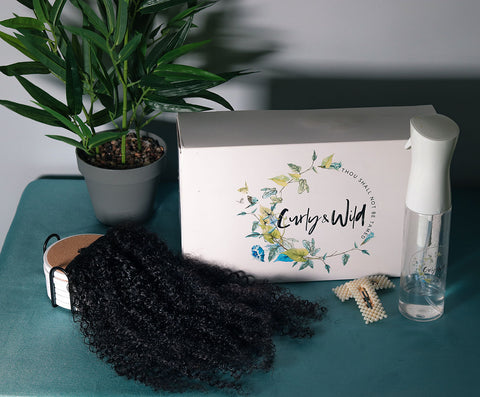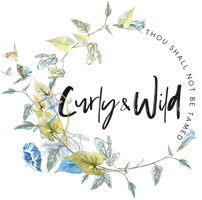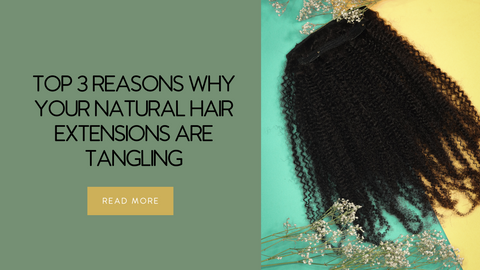THE TRUTH ABOUT WHY YOUR NATURAL HAIR EXTENSIONS ARE SHEDDING
Shedding is a big bugbear for many with hair extensions, and it can be frustrating due to the amount of money you invested. It’s only natural to wonder why your natural hair extensions are shedding and if the hair is of poor quality. The truth is that this isn’t a question of quality, especially if you have spent a decent amount of money on them, but it’s more about knowing how hair extensions are made. Because this is such a hot topic in the hair extension industry, we decided to clear up the common myth about shedding and will share with you our top tips for dealing with it, so you can continue to enjoy your natural hair extensions for months to come.
Common myth: Hair extensions are not supposed to shed
Now let us start by addressing the elephant in the room, do hair extensions shed? The honest answer is yes! Now I know that’s probably not what you want to hear but hear us out. It’s normal to experience some shedding over time and it’s unrealistic not to. Why? Because of the way hair extensions are constructed. Let’s take clip-ins for example as they are one of the most delicate hair extensions. They are made by securing hundreds of strands of hair using thread and an industrial sewing machine. Because it is the thread that attaches the hair to the weft whenever you wash, detangle and style your natural hair clip-ins, some hair will slip loose. This is why hair extensions are classed as a consumable product with a limited lifespan.
Curly & Wild natural hair extensions typically last 3-12+ months with good care. Our natural hair clip-in extensions are designed to reduce shedding as they are double-wefted. This means each clip-in weft has two wefts that were placed on top of each other and sewn together. Each double weft also has a lace protective band on top to ensure they last longer providing they are looked after. There are extensions which shed less such as a drawstring ponytail because they do not require as much styling and manipulation as clip-ins.
Ok, so you might be thinking if shedding is normal then what is an abnormal amount of shedding?
A normal amount is minimal shedding that occurs over time as you manipulate the extensions (i.e., washing, detangling, etc). Curly & Wild extensions are of the highest quality, therefore you won't get excessive shedding, however, with longer use your extensions will eventually need to be replaced.
Abnormal shedding is hair that is continuously falling out and getting thinner and thinner especially when you are not manipulating it (i.e., when it is stored in a box or while wearing it). Be aware that if you cut your hair extensions this may increase shedding, so take care.
If shedding is excessive because your hair extensions are tangled, and you are heavily manipulating it to get rid of the knots then excessive shedding is inevitable. If you are having tangling issues, be sure to check out our blog post below with our top tips on how to resolve it.
How to reduce hair extensions from shedding
At this point you may be thinking, this is all good to know, but how do you stop your hair extensions from shedding? Well like we said, some shedding is naturally going to happen over time, but there are ways to reduce shedding, which will help increase the longevity of your hair extensions.
1. Keep your extensions detangled
Keeping your hair extensions detangled is crucial when looking after natural hair extensions. As long as you have a regular detangling regimen this will stop your hair extensions from tangling and then shedding in an attempt to get rid of the tangles. It’s important to deal with tangled hair extensions as soon as possible because tangled hair becomes matted hair which is even harder to resolve. Remember to detangle on moisturised or damp hair only, as detangling dry hair will only increase shedding.
2. Keep your extensions moisturised
As mentioned above, moisturising your hair extensions is important to keep the integrity of the hair. Moisturising your extensions doesn’t have to be complicated; you can simply use a spray water bottle and a bit of leave-in conditioner. Now and again, remember to take the time to deep condition your extensions, as this will increase the hair’s capacity to retain moisture.

3. Use weave glue
Weave glues have been specifically designed to reduce shedding in weaves by bonding the hair together along the top of the weft. You can use weave glue on your natural clip-in extensions to slow down and reduce shedding, so it’s worth incorporating it as part of your extension care regimen. Pro tip: use black weave glue for darker hair.
4. Incorporate protective styling
With natural hair when you wear protective styles it helps you retain length. The same is true with your natural hair extensions because leave-out hairstyles are more exposed to the elements and will need more styling. The less you are styling your hair extensions the less hair you will lose over time.

If you have bought natural hair extensions from a reputable, knowledgeable and experienced company, minimal shedding is commonplace, but it need not be the end of the world. Thankfully, these tips above are simple to incorporate and don’t take a lot of time. When it comes to looking after your natural hair extensions a little bit of planning goes a long way to ensure your extensions are long-lasting to allow you to enjoy your beautiful hairstyles.
We hope this helps clarify the common myth about hair extensions shedding and ways you can reduce it in the future.
If you have any more questions, please get in touch with us, we are always happy to help.
Interested in our natural hair extensions?






























Comments
0 Comments